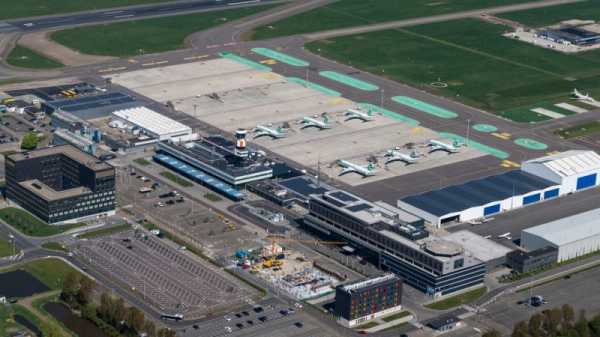
Flights will have their CO2 emissions capped from 2025 depending on the airport, the Dutch cabinet announced on Friday without yet specifying the different thresholds for each.
The law follows up on the “Aviation Memorandum 2020-2050”, a 2020 memorandum which laid down the blueprint for measures to achieve increased sustainability in the Dutch aviation sector.
“Currently, there is no global, European or national instrument that legally anchors aviation CO2 emissions in absolute terms. The CO2 cap provides this anchorage. The CO2 cap secures the climate goals for aviation by setting clear and enforceable limits on permitted CO2 emissions, thus creating a guarantee for meeting the climate targets […],” Infrastructure and Water Management Minister Mark Harber stated in a letter to parliament.
“The targets are currently unenforceable; without introducing a legal cap, there is a risk that CO2 emissions from aviation will in practice turn out higher than agreed, as a result of which the goals of the Aviation Memorandum will not be met,” he added.
The ceiling will be implemented individually at each airport in the Netherlands. This method of implementation had emerged as the only feasible possibility following a legal assessment and an impact study which were carried out before the announcement of the law.
While the exact cap for each airport is still to be determined, it was announced that it would stay fixed for several years – meaning that if an airport exceeds the cap one year, it can compensate for the excess emissions while the cap remains fixed.
“When further designing a CO2 cap, a choice also needs to be made on the most appropriate way to monitor and forecast CO2 emissions […]. This will include looking at the ReFuelEU Aviation proposal from the European Commission’s Fit for 55 package, which includes proposals on detailed monitoring and reporting of fuel data (including per airport) and a measure against refuelling,” Harbers added.
The cap is planned to be implemented in 2025.
(Benedikt Stöckl | EURACTIV.com)
Source: euractiv.com



